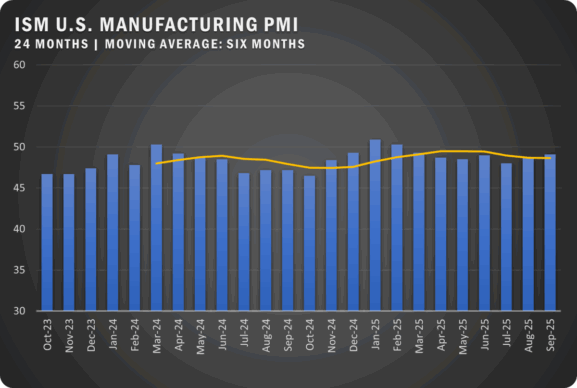Inflation Busters: Protecting Profits As Costs Rise

By Phillip M. Perry
Inflation is rising faster than any time in recent memory. Businesses must deal with rapid cost increases by managing cash flow efficiently and communicating effectively with customers and suppliers. The benefits of inventory reduction must be balanced against the need to maintain critical stock for top customers. Inflation has taken root. Businesses everywhere are dealing with annualized cost increases of nearly 7 percent — the fastest pace in 40 years and significantly higher than the 1.8 percent average of the past decade. The resulting upticks in operating costs can cause serious damage to the bottom line.
“We’re in a very unfortunate situation now,” says Bill Conerly, Principal of his own consulting firm in Lake Oswego, Oregon (www.conerlyconsulting.com). “Businesses that have always devoted their efforts to serving customers and being productive must also start worrying about covering their costs in the most effective way. That means they need to shift some of their focus to coping with inflation.”
The challenge is all the greater for its unfamiliarity: It’s been 30 years since inflation was much of a player in company planning. Experts don’t see relief any time soon. They point to a number of root causes, one of which is energy. “With the cost of oil baked into so many things, it seems we are going to see more significant inflation in the months ahead,” says John McQuaig, managing partner of McQuaig & Welk, the Wenatchee, Wash., based management consulting firm (www.mcqw.com). He points to a continuing global disruption in the delivery of goods and services as yet another cause. “Supply chain issues tend to create opportunities to raise prices because of the effect of supply and demand. When the former is crunched, prices go up by the nature of the market.” And there’s yet a third driver of higher costs: a wage spiral resulting from the pandemic’s softening effect on the labor supply.
Forecasting Cash Flow
Of all the steps businesses can take to mitigate the bottom-line effects of inflation, the most important is better management of cash flow. Inflation tends to accelerate the drain of money from company coffers, and throttle the flow that comes in. If left unaddressed, these battling trends can gut profits and threaten business survival.
Experts advise looking at the coming months with an eye toward estimating what will happen to cash balances. “Proactively managing cash flow is critical right now,” says Lisa Anderson, president of LMA Consulting Group, Claremont, Calif. (www.lma-consultinggroup.com). This can be done by running periodic forecasts. “What I would recommend is looking at your demand side and asking, ‘What are we really going to need here?’ And then looking at your supply side and asking, ‘What will I have to make?’ And then determining what the answers mean for cash flow. If it’s going to be negative, you better borrow some money.”
Such analysis, of course, involves estimates of future revenues — a practice tainted by uncertainty. “Having a sales forecast is great, but that doesn’t mean you will collect all the money you think you will,” says Scott Beaver, Senior Product Marketing Manager at Oracle NetSuite. “And even if your sales forecast is a hundred percent accurate, will the expected timeframe be met?”
What determines cash on hand is not sales but collections, and history shows that during inflationary times customers start paying slower as a result of their own cash squeezes. Planning must reflect the reality of cash flow uncertainty. “Growing accounts receivable can put serious strain on smaller businesses that may not have the cash reserves to absorb delays in receipts,” says Beaver. “For most companies, cash flow forecasts are less than 75 percent accurate.” One approach to anticipating likely variables is to look at historical performance. What percentage of receivables is usually collected during slower seasons? That figure can be applied to open receivables to help estimate the likely pace of receipts.
Faster Receipts
Historic data, of course, may provide a less than reliable foundation for future forecasts. Whatever the estimates for what lies ahead, businesses can obviate cash squeezes by accelerating accounts receivable and stretching accounts payable. For the former, experts advise running regular aging reports. How much do customers owe in increments of two weeks, 30 days and 60 Days? Any growth in the numbers over time might indicate a steady deterioration of cash flow.
Keeping in close touch with customers can also help accelerate receipts by providing opportunities to request timely payments and helping spot nascent issues that may grow into future roadblocks. “Maintain a good handle on what customers are doing,” says Anderson. “What are their future sales activities? Are they encountering problems that may affect operations?”
Not all customers are of equal importance, and it’s smart to concentrate efforts on the most profitable. Account reviews can identify which customers should receive the most attention. “So much of the important information required to monitor cash flow is tied to a selling cycle which varies by customer,” says Frank Cespedes, Senior Lecturer at Harvard Business School. “Some buyers say ‘yes’ or ‘no’ when you make a call; others require multiple iterations of proposals. Some buy what you have in inventory; others require customized items. Those things affect the time to receive cash and the cost to fulfill orders. Good account reviews unearth that information.”
Companies might also explore requiring bigger deposits from customers, says McQuaig. Sweeten the increase by emphasizing customer benefits. Maybe you already have some needed materials or product in inventory, that the customer can actually come and see. Or offer free early delivery. Emphasize that earlier payment helps the customer avoid higher prices later.

As for the outward flow of cash, a tried-and-true tactic is delaying the payment of monies owed. “Good financial management on the buy side has always stretched out payables,” says Cespedes. “This is particularly so in an inflationary environment where businesses must pay a lot more attention to the payment cycle.”
Stretching payables can, of course, backfire. For starters, it can mean the loss of the five percent or 10 percent discounts many companies offer customers that pay before their due dates. It can also result in higher prices for goods and services. “Extending too far makes you more of a risk,” says Beaver. “And suppliers tend to give better prices to customers that are less risky.”
And there’s also the dependability of deliveries to consider: Ongoing supply chain disruptions will cause vendors to favor deliveries to customers that pay on time or early. The cost of not having essential materials can be greater than the interest cost required to borrow money to bridge cash gaps.
Mitigating Costs
In an inflationary environment, suppliers of goods and services tend to raise their prices. And higher rates of inflation tend to make the increases bigger. “When inflation is two percent everything tends to increase by that amount, plus or minus a little bit,” says Conerly. “But at seven percent inflation, say, prices tend to increase by that amount plus or minus a lot.”
Businesses should try to get readings on anticipated future increases and shortages. This can be done by maintaining close contact with vendors. “Work closely with suppliers and develop good relationships with them,” says McQuaig. “What do they see ahead in terms of product availability and price?”
There’s another advantage to close contact, notes McQuaig. The suppliers may give you a little more favorable treatment. For example, you might leverage any significant volume you’re doing by asking the vendor to hold inventory you would normally keep in stock. You can also ask if a price commitment now will remain firm for the duration of the season.
Another cost-saving move is to pursue less expensive alternatives to pricier goods and services. “Domestic inflation has been higher than in most of the world,” says Conerly. “Some businesses are shifting sourcing to other countries.”
Finally, dig deeper into the reasons for suppliers’ price hikes. “Are goods and delivery cost increases in line with inflation?” poses Beaver. “Or are suppliers trying to pad their own margins a little bit, just because they see inflation as an opportunity? That sometimes happens.”
Trimming Inventory
Before inflation appeared on the horizon, businesses responded to supply chain disruptions by purchasing and holding whatever they could get their hands on. Any step to avoid running out of product seemed like a good thing.
Times have changed. Now too many warehouse goods can tie up cash at a time when company treasuries need more liquidity. “Businesses need to be thinking about how to manage their inventory better,” said Anderson. “They need to make the right decisions on what, when, how and where to buy it, as well as where to store it. And they need to manage their supply chain network to maintain strategic inventory stockpiles.”
Also relegated to history is the unmodulated “just in time” (JIT) delivery paradigm seen as a strategic hallmark after the great recession of 2008. While JIT helped companies maintain good cash flow by trimming inventory investment, the supply chain debacle highlighted the importance of moderation. “Businesses have to ask whether it’s better to have too much inventory or to run your customers out,” says Anderson. Given that neither situation is ideal, Anderson advises maintaining sufficient inventory stockpiles to support key customers while maintaining JIT stock for others.
Beefing up stock of critical items can be a smart move even in these inventory-cutting times, says McQuaig. Given the continuing supply chain issues, stocking out of a needed item can result in the loss of important customers. “In construction, for example, even getting the right size water heater can be very difficult right now,” he says. “A lot of plumbers are having to stock units ahead of time, so they have them available.”
The decision on overstocking key items must be made on a case-by-case basis. “Generally speaking, it’s a good idea,” says McQuaig. “The danger is the possibility of running out of cash if you do not have enough working capital.” McQuaig gives the example of a company installing irrigation systems. “If they know pipe is going to go up in price because oil is a big component, and they see supply might get pinched, they might stock all the pipe they need for a year. But they won’t get back the money tied up in pipe until they receive it from their customer. They might end up in a situation in which they can’t meet their payroll.” Companies can obviate such difficulties by running monthly or weekly cash flow forecasts.
Raising Prices
Asking more for goods and services is another way to adjust cash inflows. “Businesses are very hesitant to raise prices when they don’t have to,” says Conerly. “And they often get push back from their salespeople. But the fact is, buyers are accustomed to seeing price increases in inflationary times.”
The amount of increase can be based on the components of production, noted McQuaig. “If you are a builder of custom homes, do you have an inflation index in there in case your costs go up? Prices for lumber and other significant items have been varying all over the map. If the time frame is a year to build a house, how did you price it at the front end to make sure that you were covered for inflation on the back end?”
Price changes must be carefully communicated. “Give the white-glove treatment to tier one customers by reaching out and explaining how your costs are rising,” says Beaver. “Communicate to them that the price rise is only temporary.” One approach is to tell your most important customers that you are absorbing 20 percent of the price increases and passing along the other 80 percent. Another is to separate out any fuel charge increases from the delivery costs and explain you are only passing them along. “A company will have more leverage to raise prices if it has offered great service and maintained inventory.”
Above all, avoid delay. “Businesses are most successful at raising prices when they do so quickly,” says Anderson. “Customers are more willing to absorb increases during inflationary times when they can see it makes sense in the marketplace.” Waiting too long risks losing the opportunity, especially if inflation leads to a serious economic downturn. “No one wants to absorb a price increase during a recession.”
New Rules
Today’s unexpected return of inflation has changed the operating paradigm for businesses large and small. The Great Recession of 2008 had sparked the habit of relying too much on just-in-time delivery of supplies to trim cash investments. Further, the recent willingness of customers to accept price increases was exacerbated by supply chain disruptions.
Now businesses must modify their cash flow management, inventory practices and pricing policies to reflect both rising costs and supply chain disruptions. “The booming economy of recent times has allowed companies to pay less attention to market developments and still be fine,” says Anderson. “But now in a time of inflationary price increases, they have to do better. The job of managing is tougher than ever before.”
INFLATION QUIZ
How Well Are You Battling Inflation?
Are you taking the right steps to mitigate the costly effects of inflation? Find out by taking this quiz. Score 10 points for each “yes” answer. Then total your score and check your rating at the bottom of the chart.
Have you instituted the following practices?
- Running periodic cash flow forecasts
- Maintaining accounts receivable aging reports
- Accelerating account collections
- Stretching accounts payable, if appropriate
- Keeping in close touch with customers
- Identified the most valuable customers
- Increasing productive communications with suppliers
- Ensuring the compliance of any loan covenants
- Trimming inventory while bolstering critical items
- Raising prices judiciously
What’s your score? 80 or more: Congratulations. You have gone a long way toward protecting your business from costly inflation. Between 60 and 80: It’s time to fine-tune your financial management. Below 60: Your business is at risk. Take action on the suggestions in the accompanying story.
This article originally appeared in the 2022 July/August edition of Brushware magazine. Header image by istockphoto/gesrey. Cash flow image by istockphoto/Olivier Le Moal.


